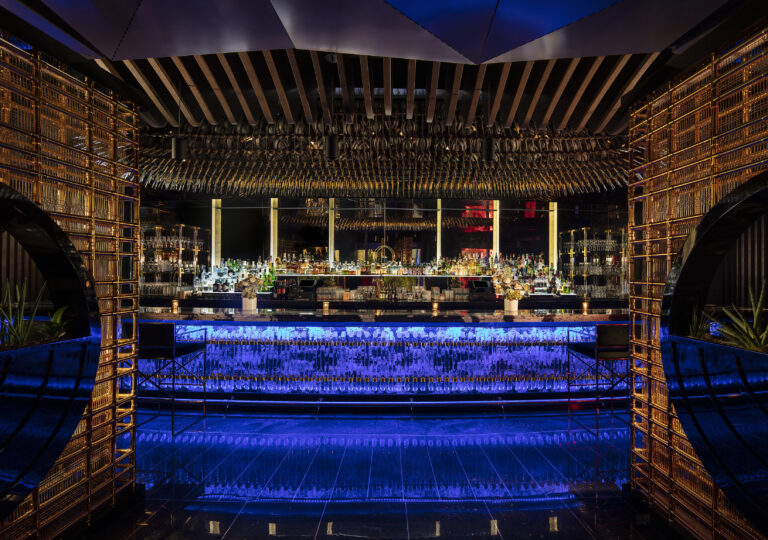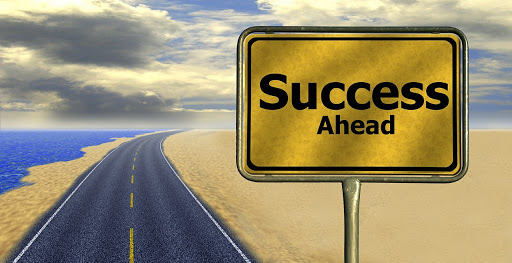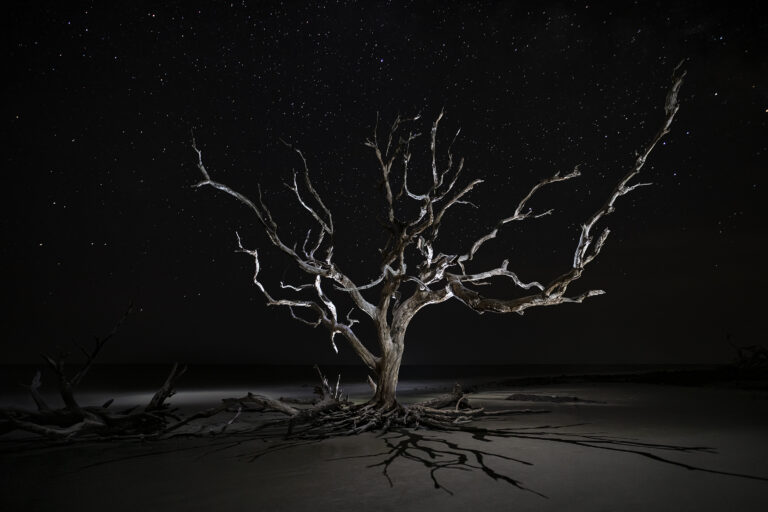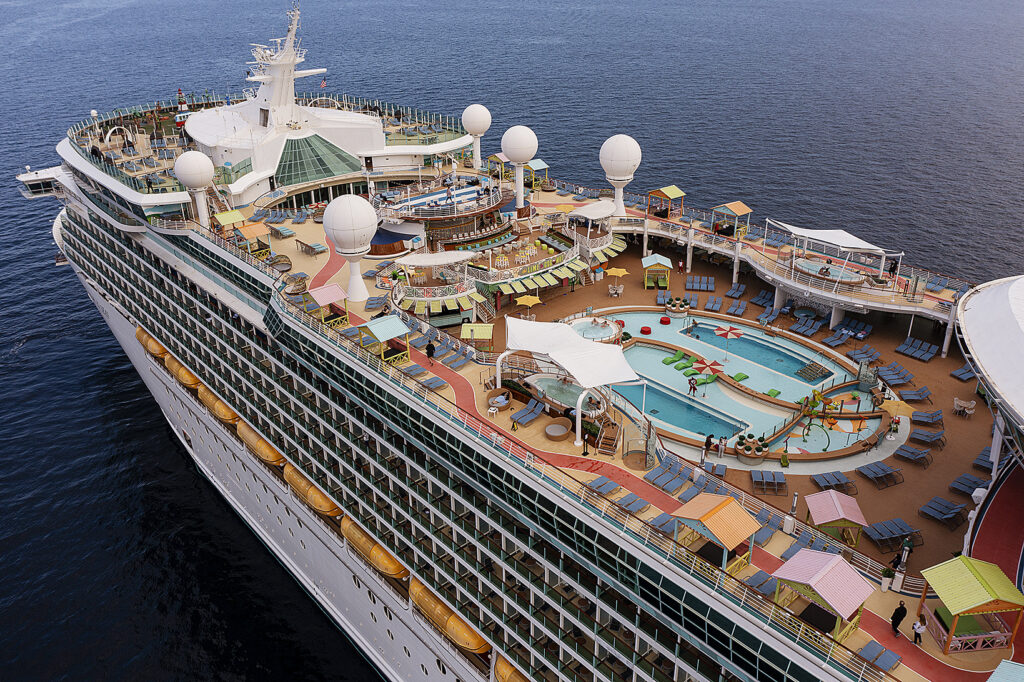
In late 2019 my client Robert Soldo Design set into motion the gears to get us and his team aboard the Royal Caribbean Navigator of the Seas, based in Miami, slated for mid-2020. But then Covid hit and we had to postpone, a few months, then a few months more. We would get our expectations up, set a date, only to have them dashed by the ever-expanding Covid virus. By the time we finally got around to getting a green light, the ship had moved to LA and was scheduled to move again, to a homeport in Alaska. We had a short window of opportunity between the time cruise ship operations started up, and when the ship moved to Alaska.
The Gear
Gearing up for a shoot aboard a cruise ship is a tricky business as you want to bring enough equipment to get the job done but so much to bog down the workflow. Nested within that, forget something crucial and you are toasted, there is just no way to get something delivered or run out to your local Best Buy. To complicate matters a bit more, we wanted to shoot video, which meant we brought our gimbal and other video accessories which added to the complexity of our small two-man shoot. A few years back a crew of 3 or even 4 was not unheard of, but with tight budgets and more streamlined workflows, it’s beoming common to bring only one assistant. To keep from getting in the way of operations we use battery-powered strobes which have no cables and can be controlled by remote so there is less walking between the camera and lights. This type of battery strobe operation is light years away from the times of heavy inverters and cable-intensive strobe packs. We have also ditched the constant light sources for strobes which we gell to match the ambient kelvin as required.
The workflow was all tethered with the exception of a few fast-moving deck shots. There is just no other way to see the details of a shot without a large screen. This also gave us the opportunity to send back shots in real-time to Robert who was working in Miami. We did have one person from the office and she was invaluable for styling and coordinating with the crew.
Venue 1: Blow Dry Bar
After an extensive walkthrough of all the relevant areas, our first space to shoot was the Blow Dry Bar on the main promenade deck. This posed a challenge in that the main deck is always busy with the exception of late at night, and we were unable to get cleared to open the space up at those hours. So we negotiated to have the space opened up an hour early at 7 am with the understanding that the first appointment was at 10 am. This gave us a 3-hour window to shoot, what would normally take 6 hours, soup to nuts. You can see from the images that the time restriction did not have an impact on the quality of the shots, although with some more time we could have popped off a few more details.

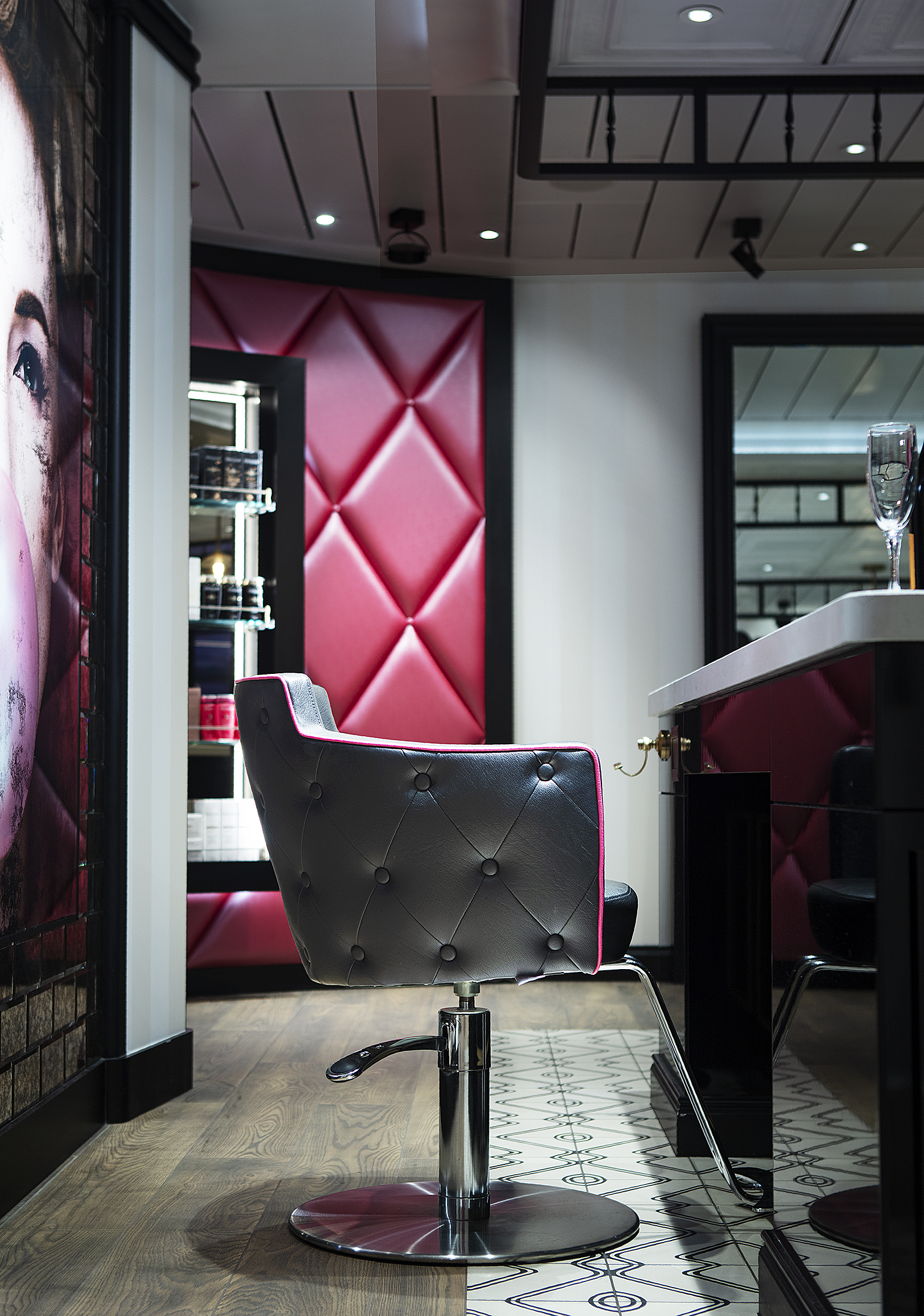
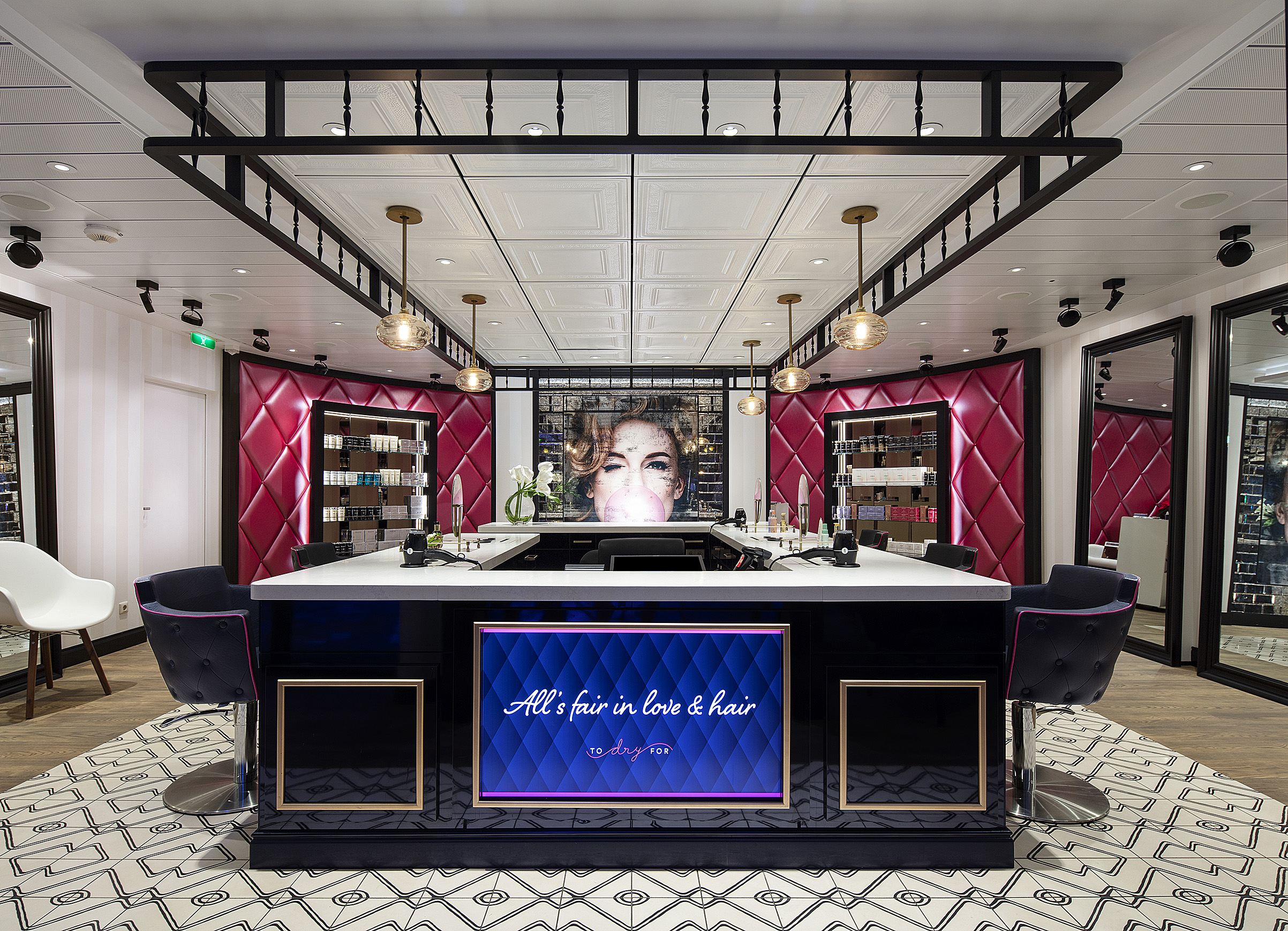
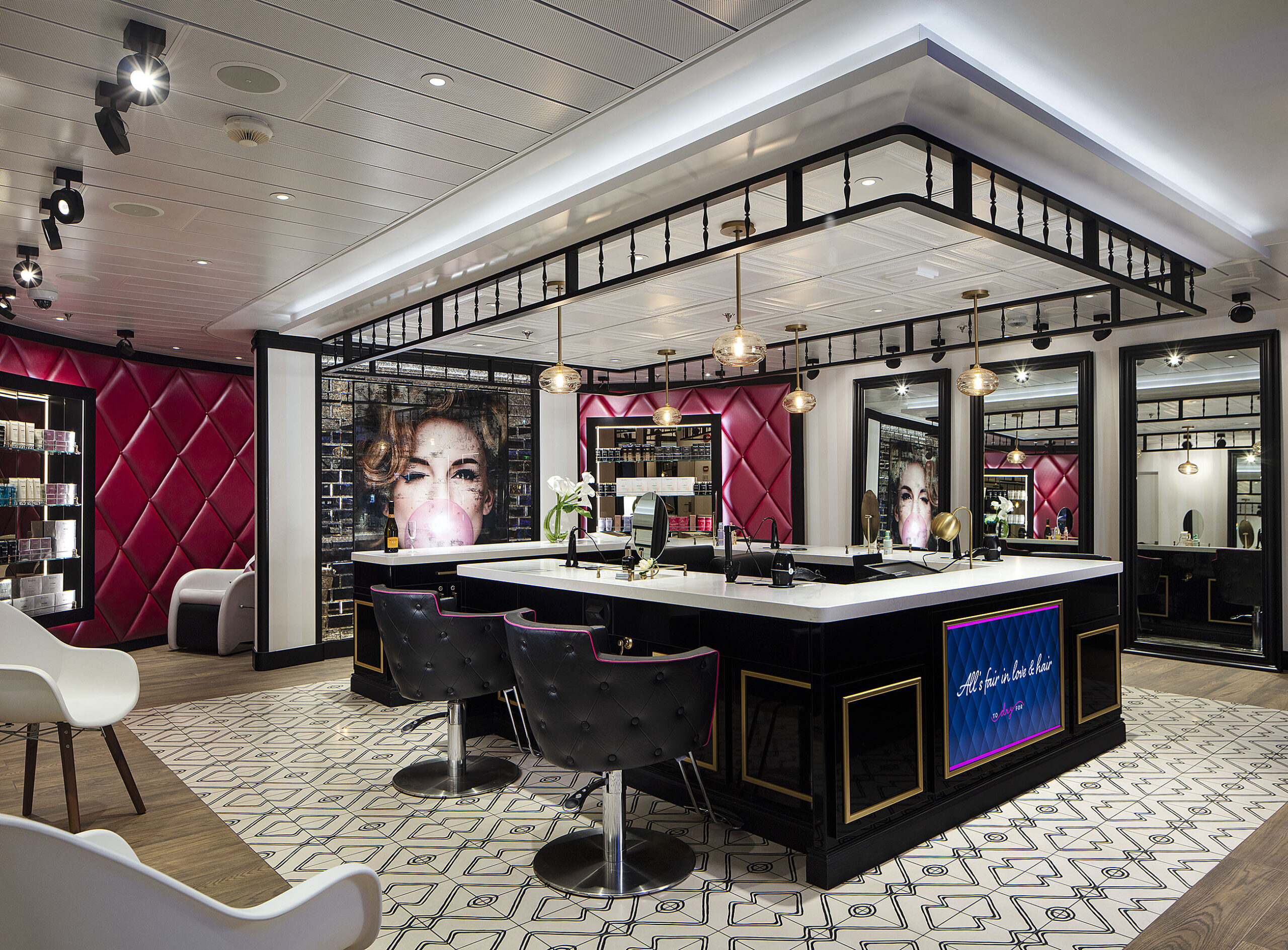
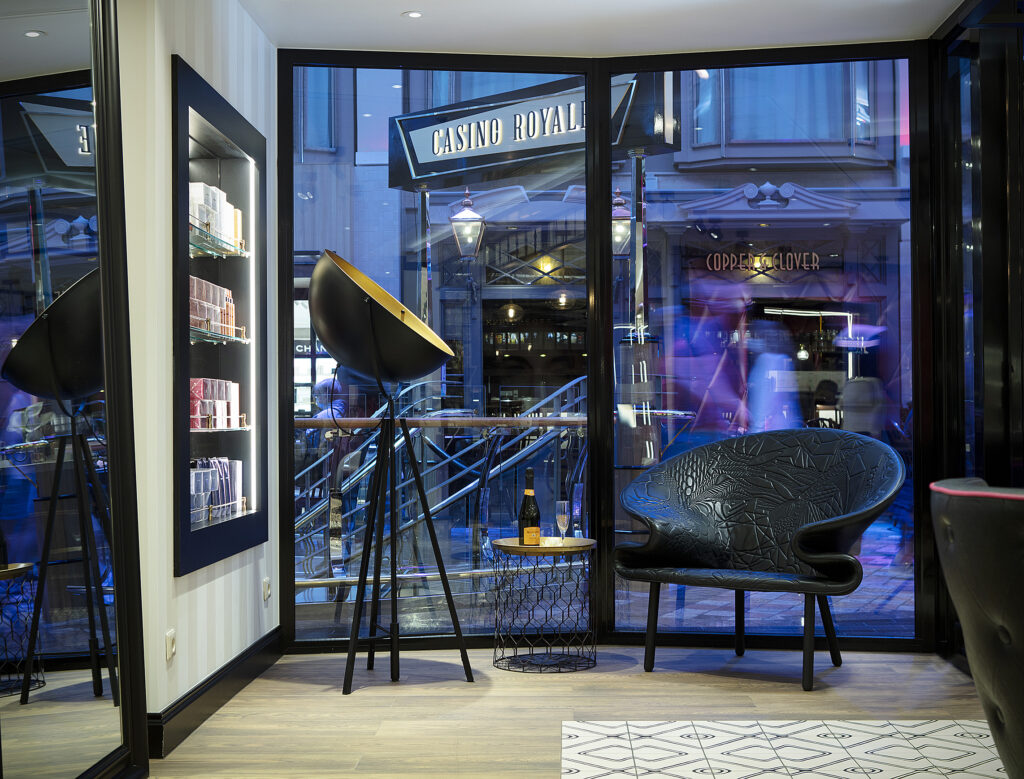
Venue 2: Windjammer
The next space and maybe the most complicated was the Windjammer buffet restaurant. Complicated because of the endless sea of chairs in big spaces, and from the camera’s perspective rows of small windows creating a technical light hurdle. Furthermore, this is one of the most active spaces on the ship and boy don’t get between a cruiser and their food! The staff is also on tight deadlines shuffling food in and out while adhering to covid protocols. So in this case with razor-thin availability of the space, we needed to move fast and not get bogged down in every little detail.
From the start you as the photographer need to make a mental hierarchy list of the most important individual shot elements to the least. Start working the most important such as gross table and chair positions, and cut at some point when time runs out, say maybe the exact placement of legs and so forth, or minor background elements. It is also very important to have, if not a written schedule, a very clear picture of the time needed vs time remaining vs shots remaining and their complexity. This is a balancing act that takes years of experience to perfect and is why clients hire experienced photographers. Many photographers can take nice photos, but only a few can manage to precisely execute a complicated logistical shoot while producing stunning images.
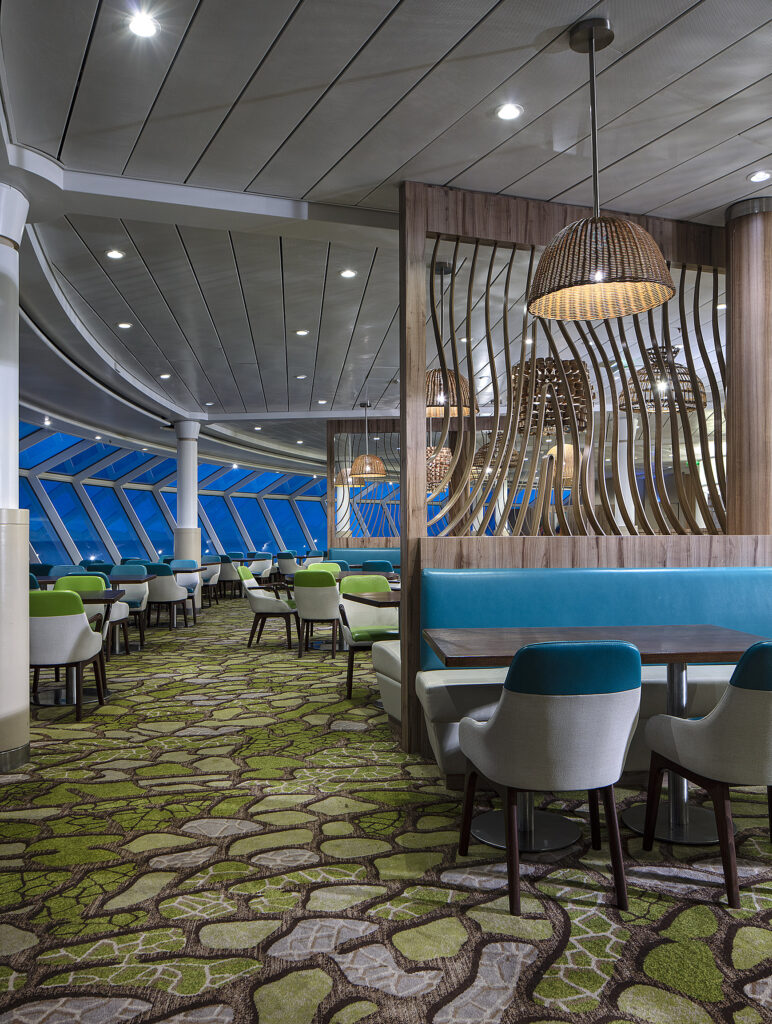
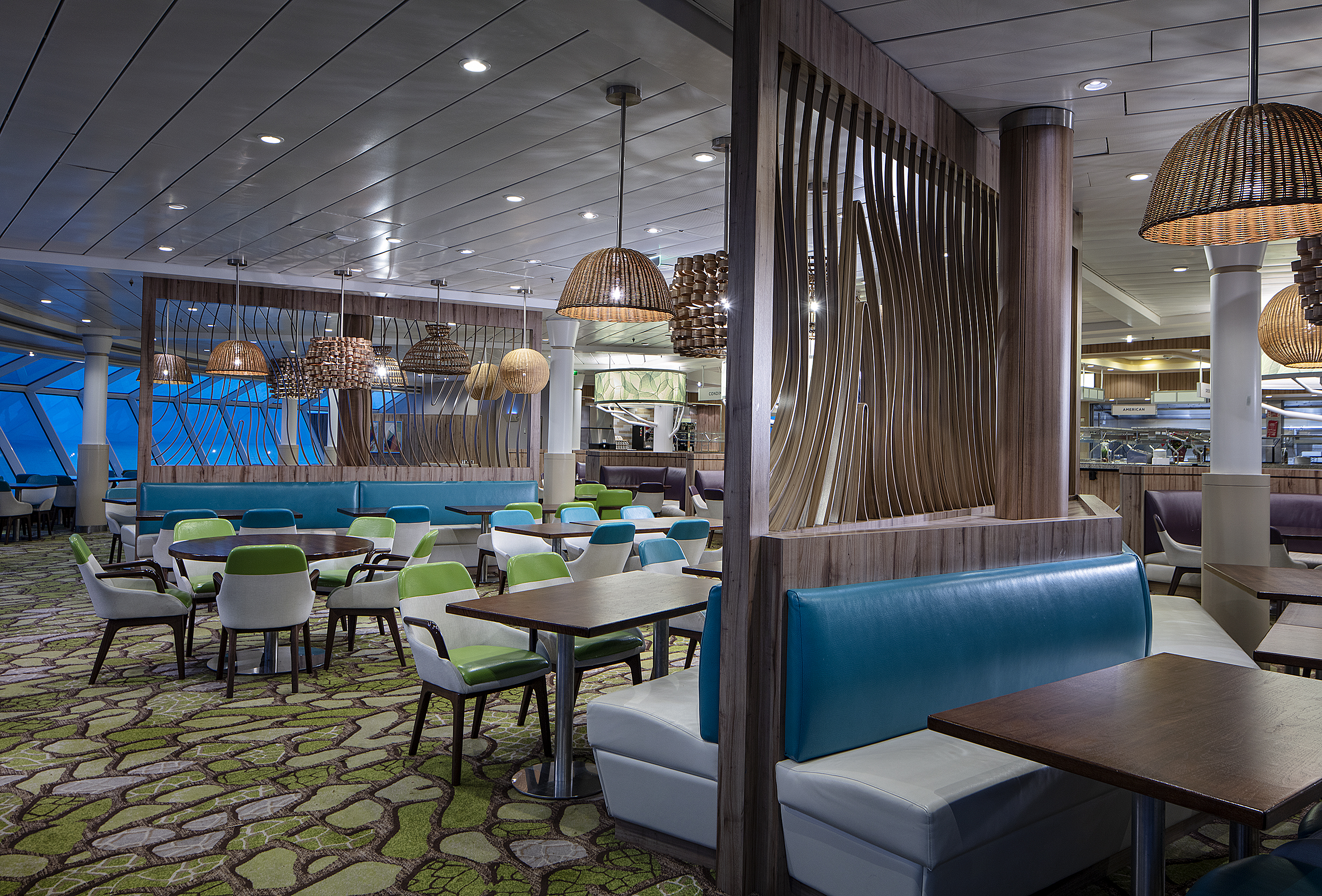
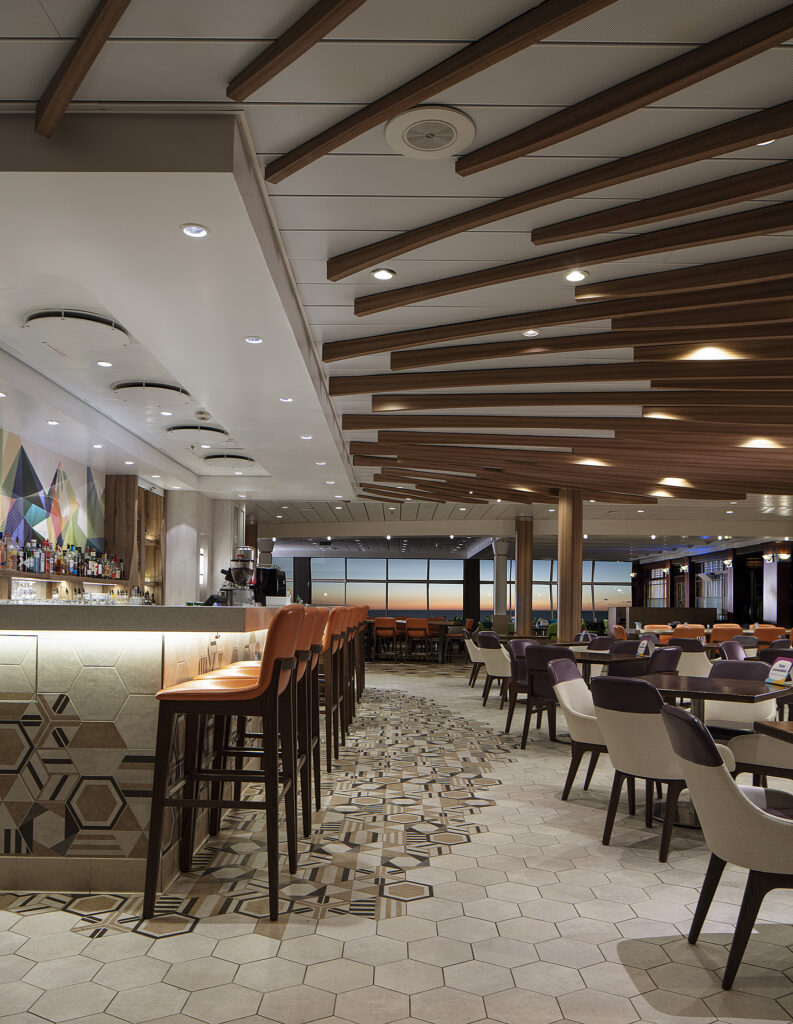
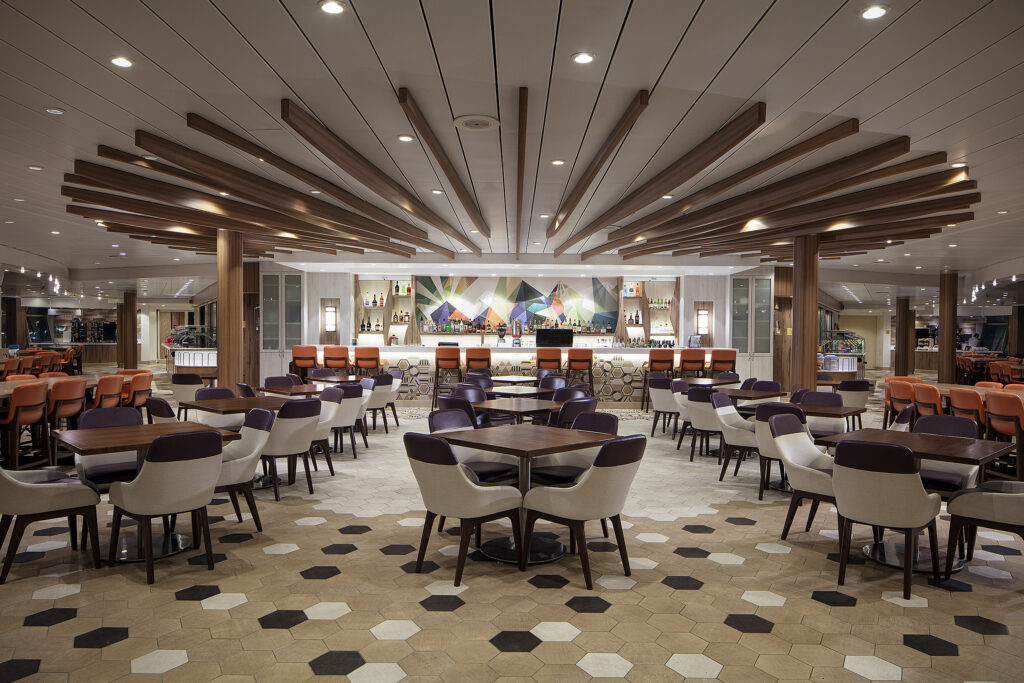
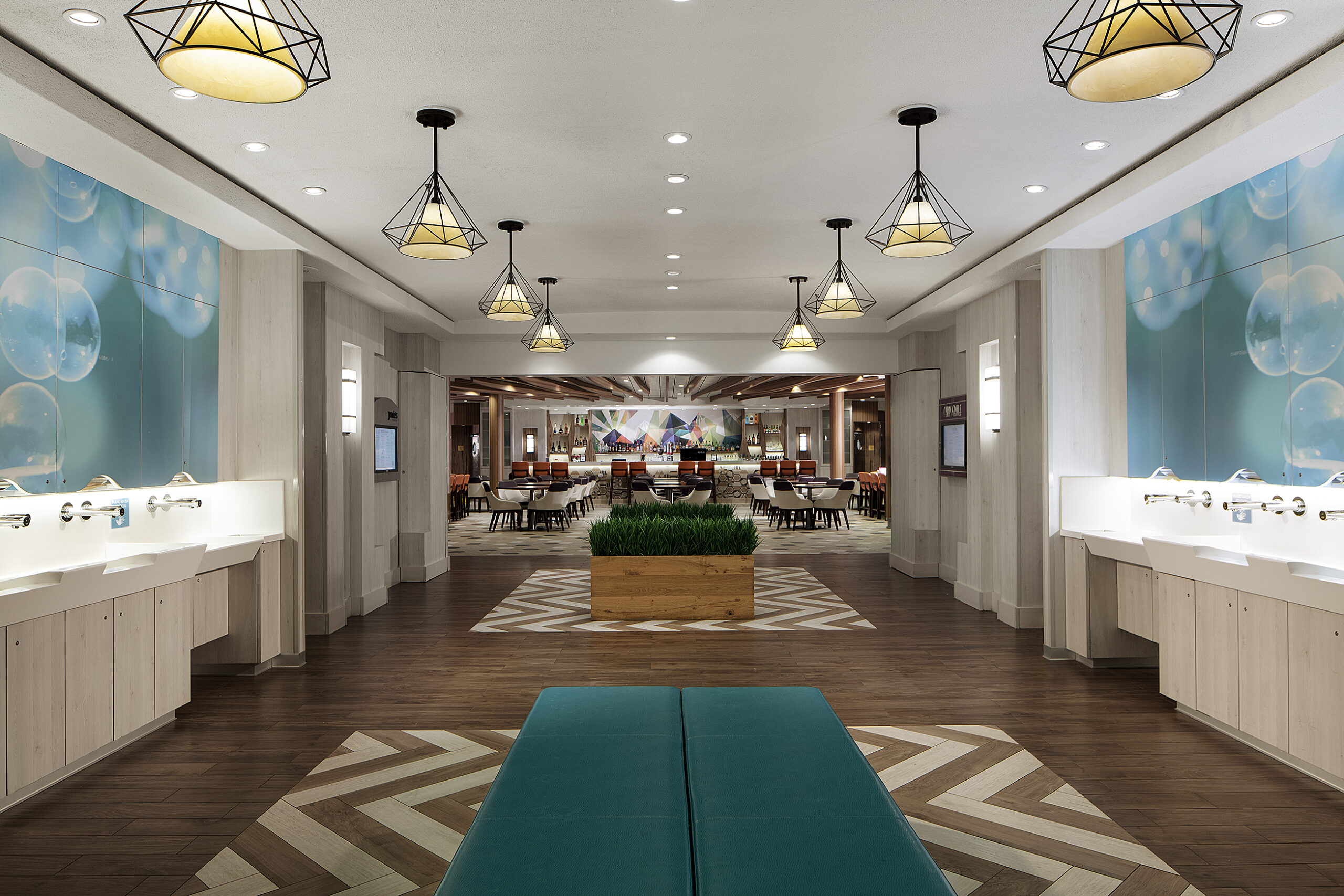
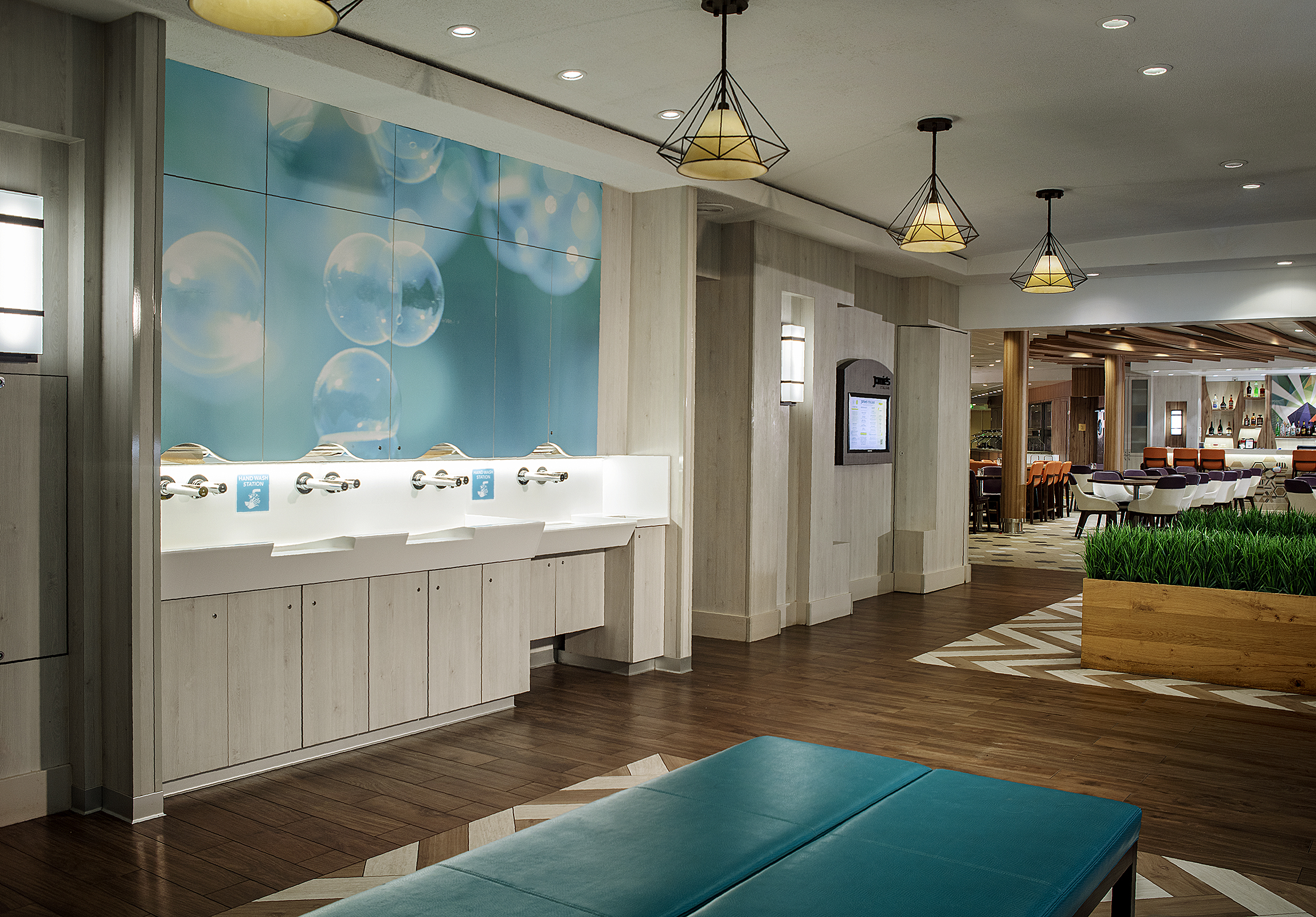
Ideally, you would shoot this kind of space at dusk or dawn due to the windows, and it just happened our only availability was exactly at these hours! Some luck never hurts! Most of the shots were done at dusk with the exception of two which showed the food line. We shot those just pre-breakfast so we had the food line filled up. With the one-point bar shot, I needed to drop in the sunrise due to having availability here only at night. For the overall of the dining area and bar, I left the windows black as they were a proportionally small part of the shot.
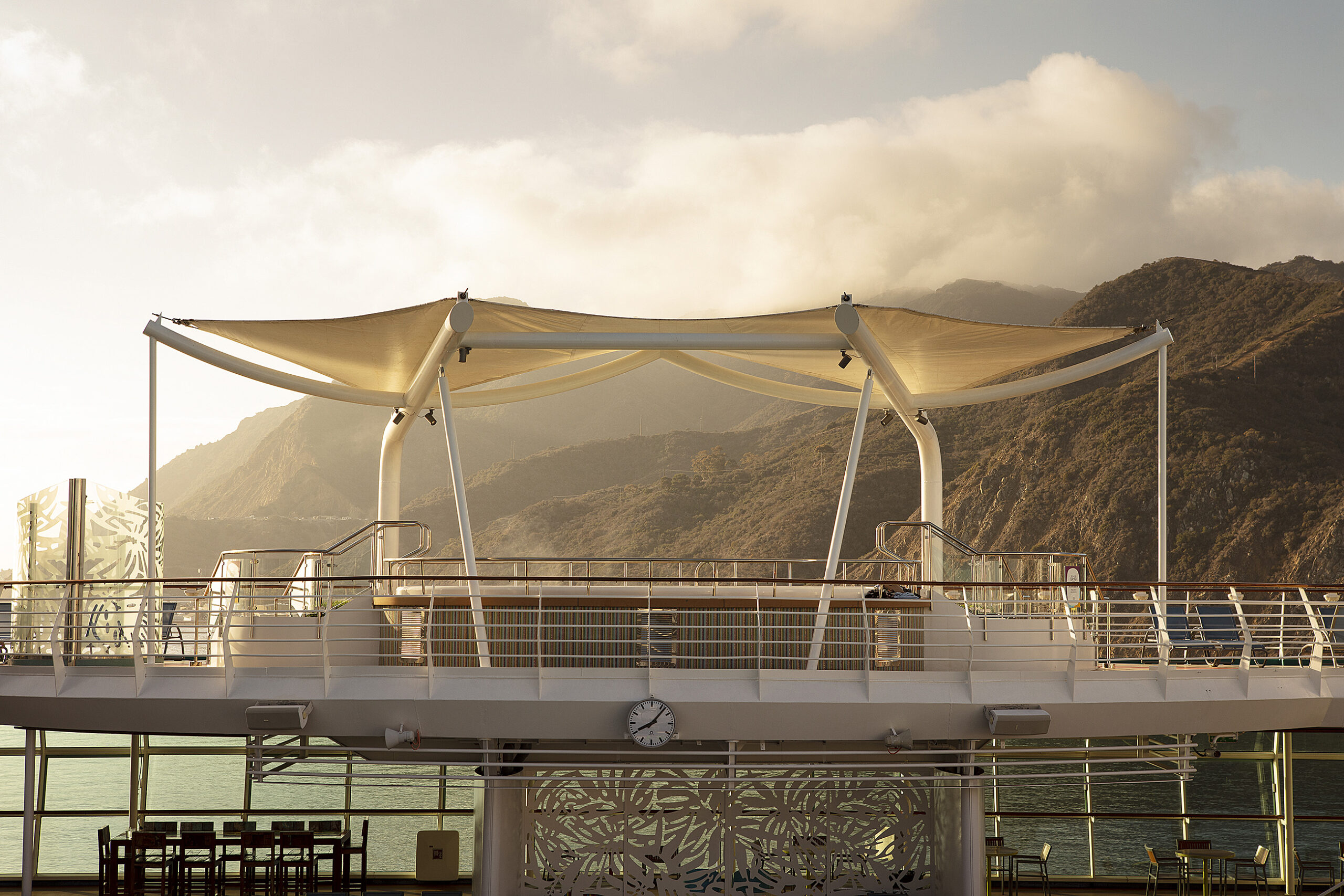

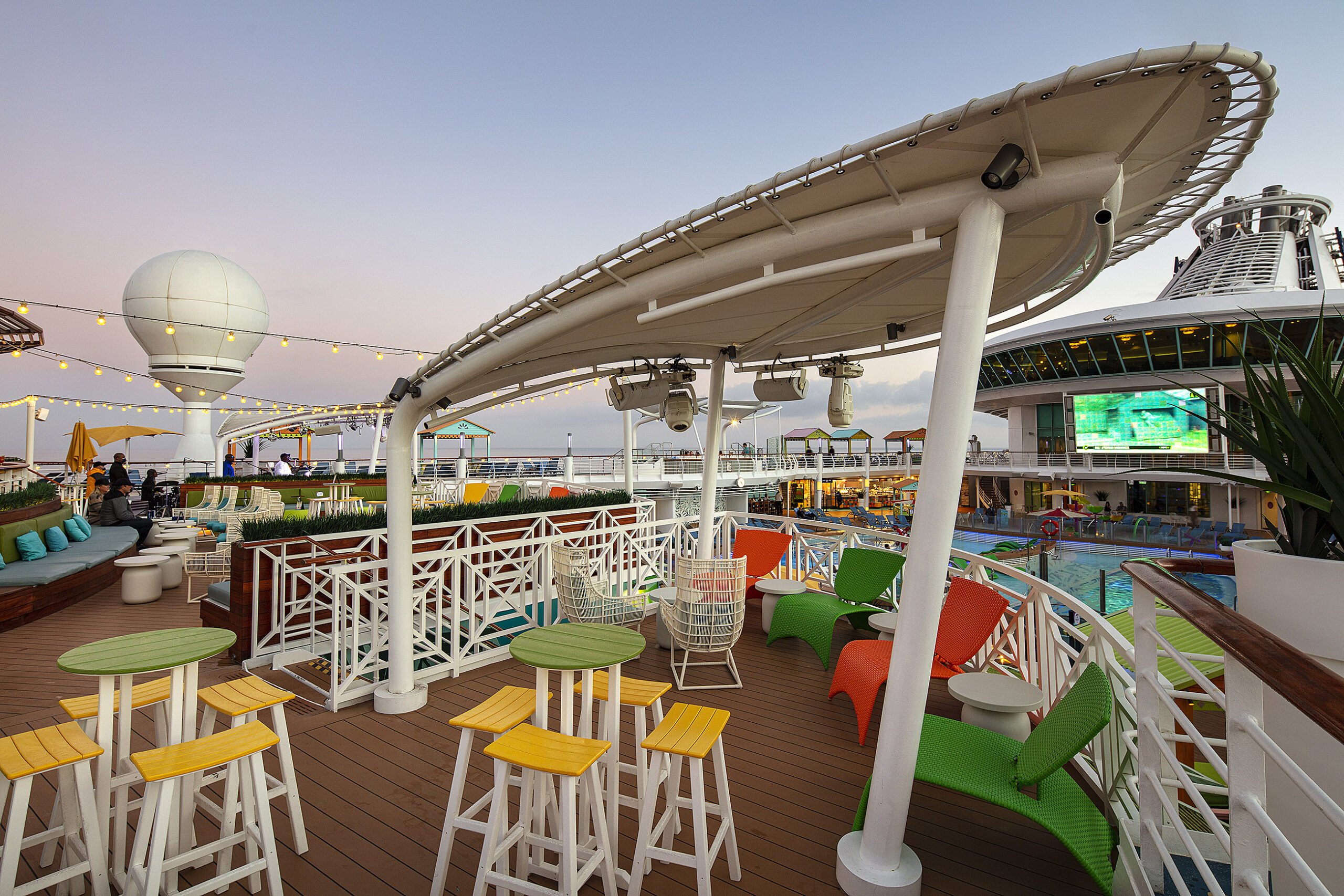
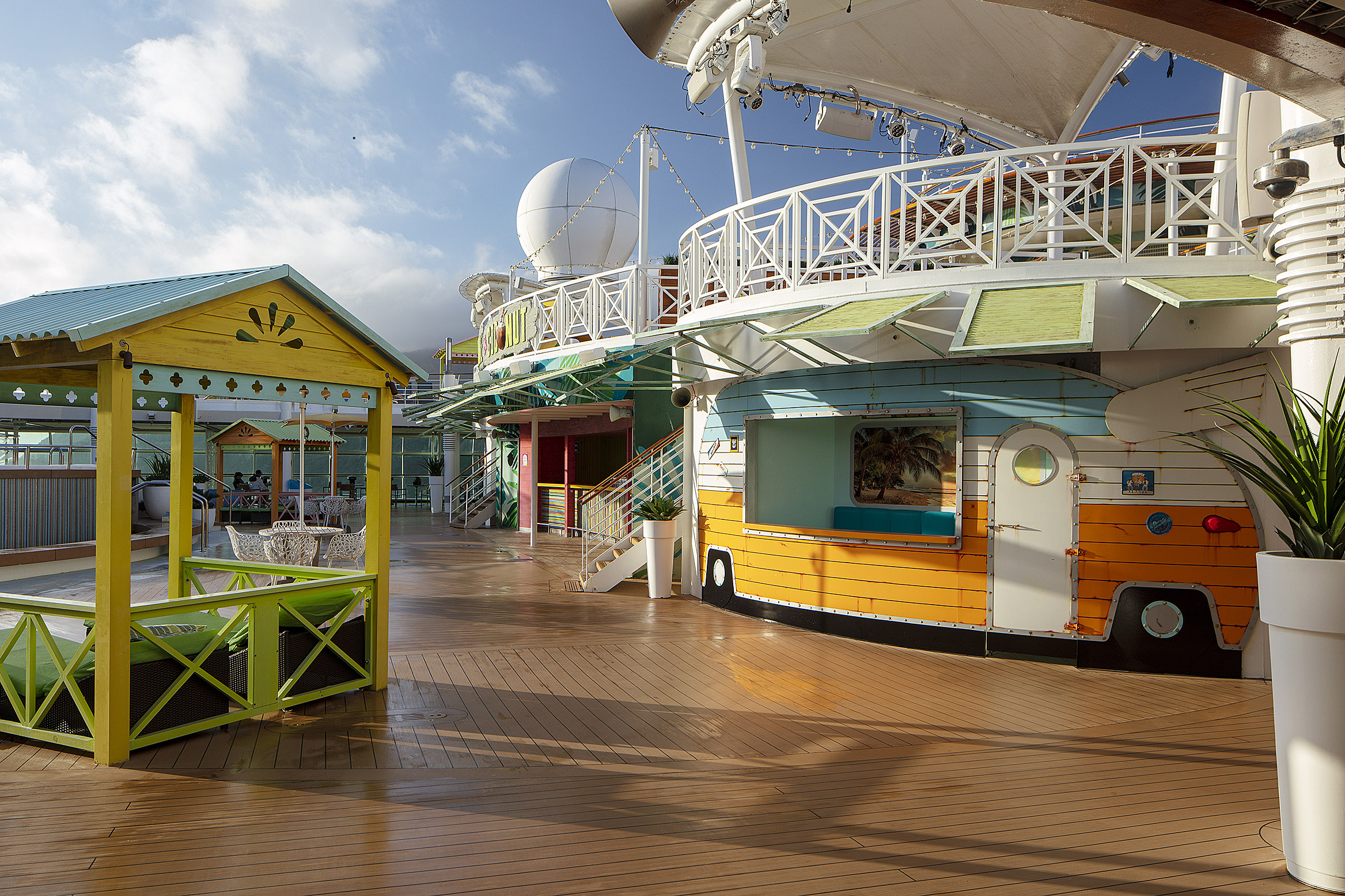

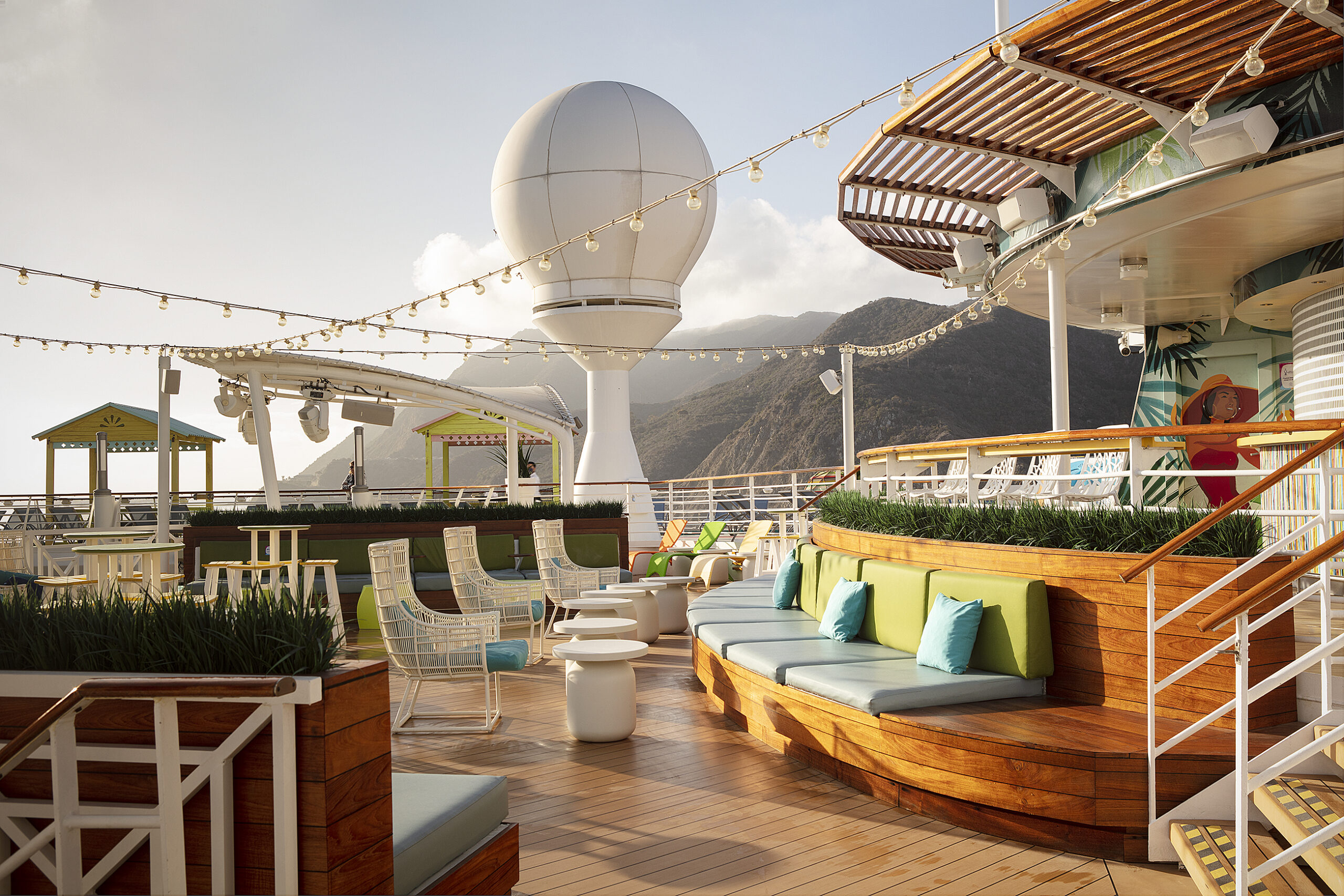
Venue 3: Main Deck
With a mercurial weather forecast, the deck was a touch-and-go item. We also were cleared to get drone shots but only if we launched from shore. This nixed the possibility of quickly launching the drone from the ship to capture the same gorgeous morning light we were capturing with the ground-based cameras.
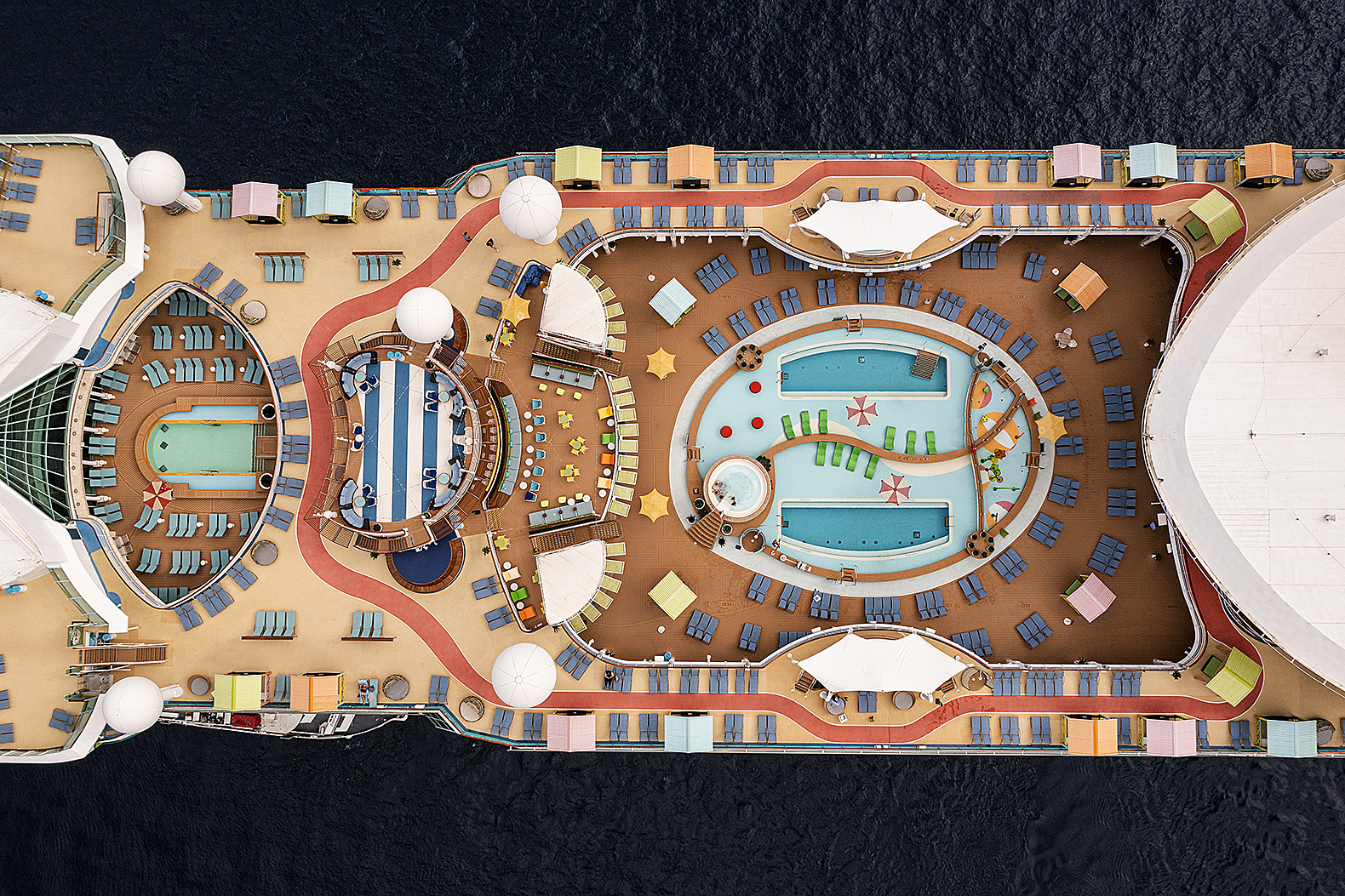

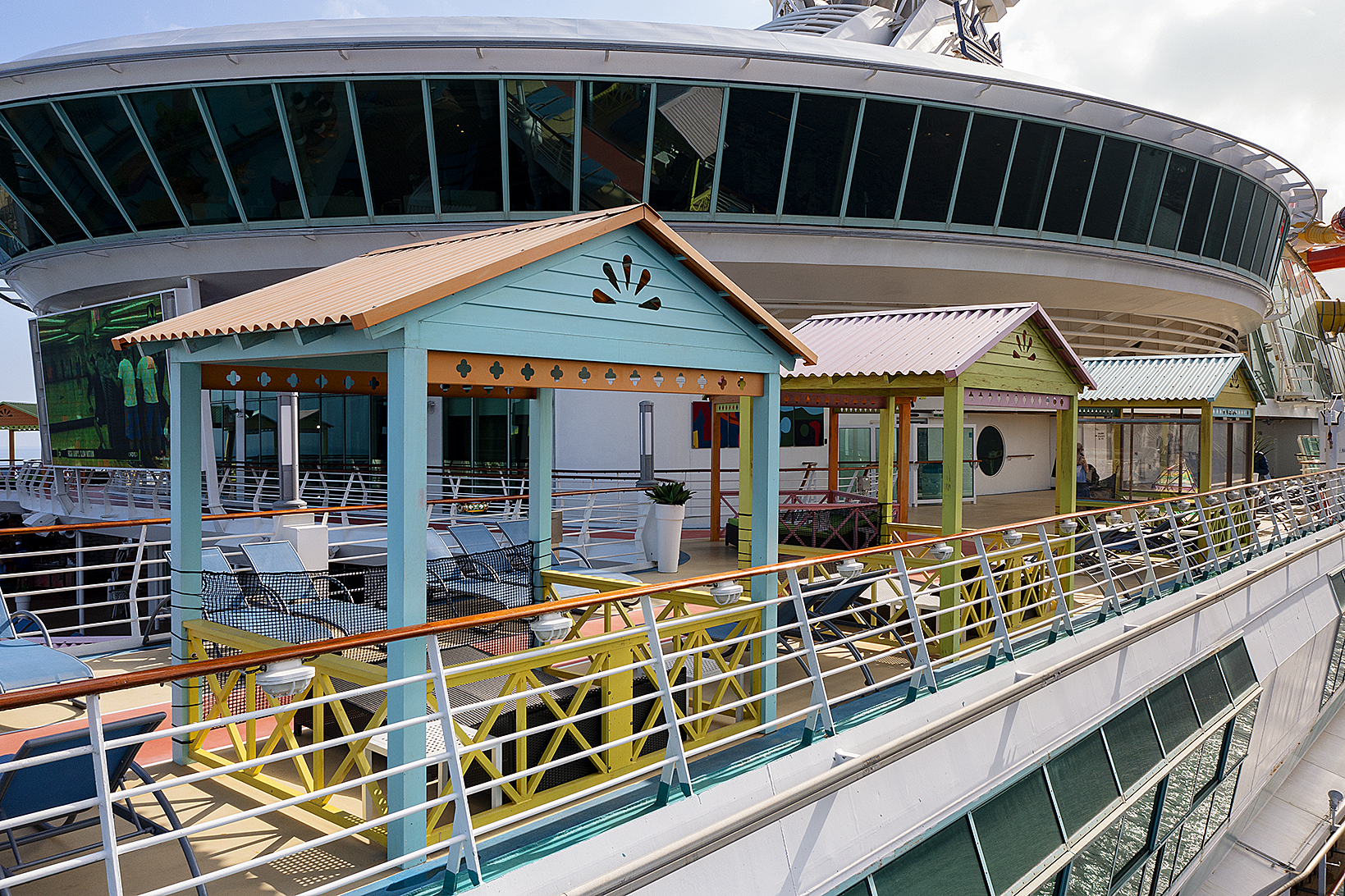
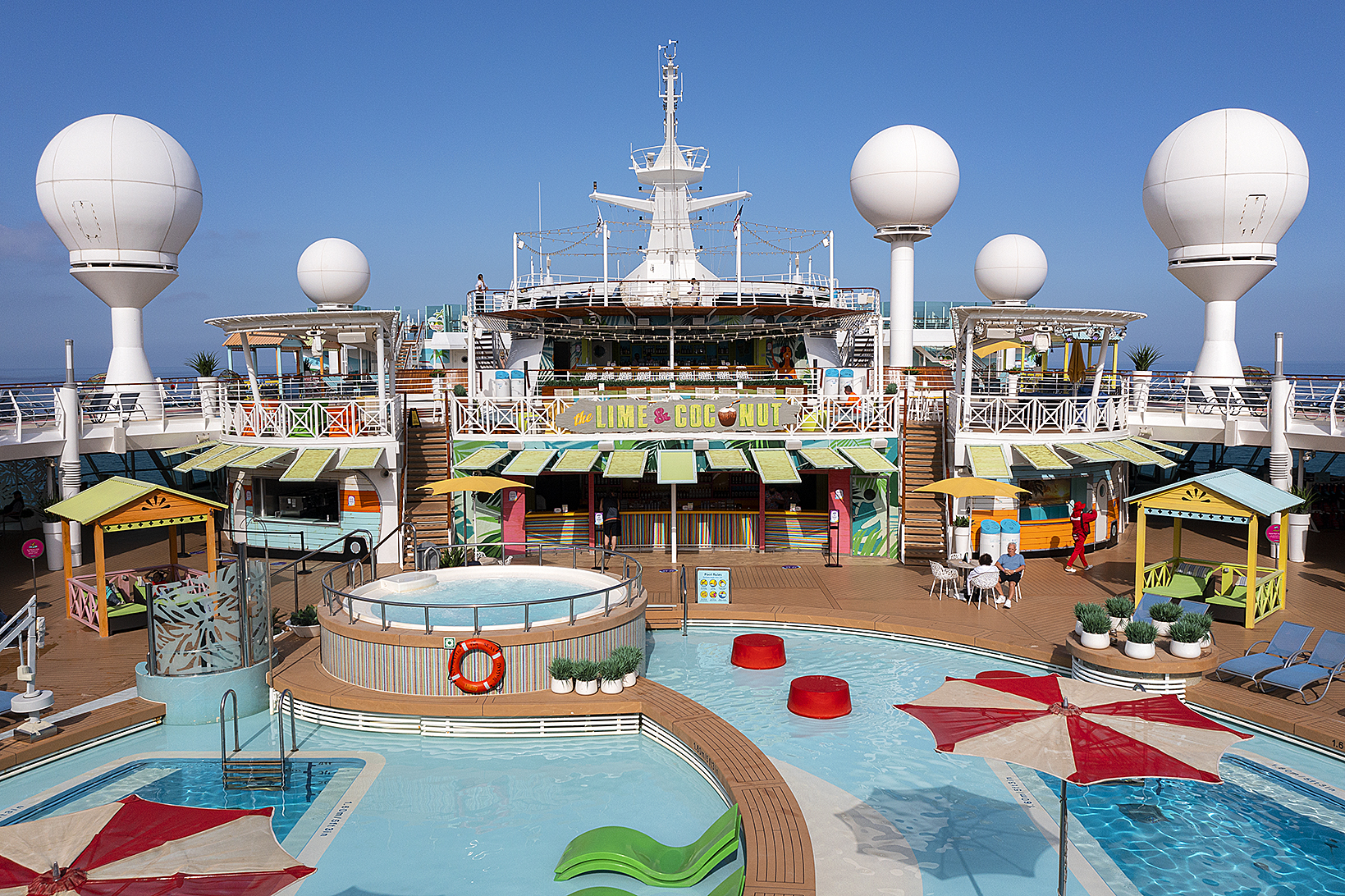
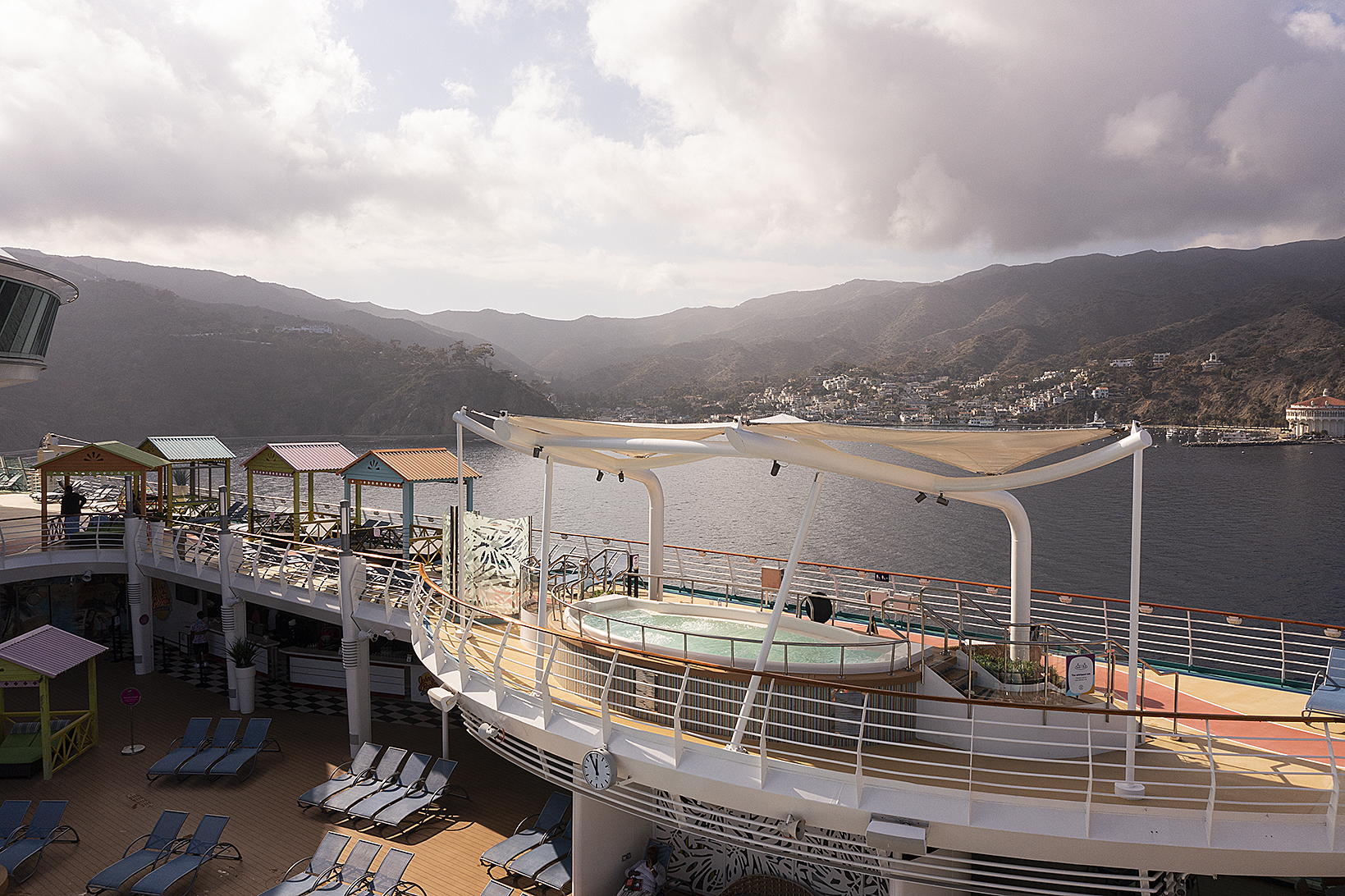
That said with a less than full ship due to covid and cooler weather the pool deck ended up being quite easy in terms of people traffic. We had brilliant weather while we were anchored off of Catalina Island, with dreamy, misty, early morning sunlight to work with for a few hours. Just after the early deck shots were done we headed to shore. To facilitate safely I sent Simon my PA back onto the ship with two-way radios. He would help with the done which was just on my edge of sight, he would be there to call in position checks and in the case of an emergency landing. The still captures combined with drone shots help fill a gap that the deck-based shots tend to leave, that is the overall design working as a whole. From an overhead view, you can better see the undulations and colors as a designer draws and envisions them in the design process. These kinds of shots are invaluable to my client’s presentations.

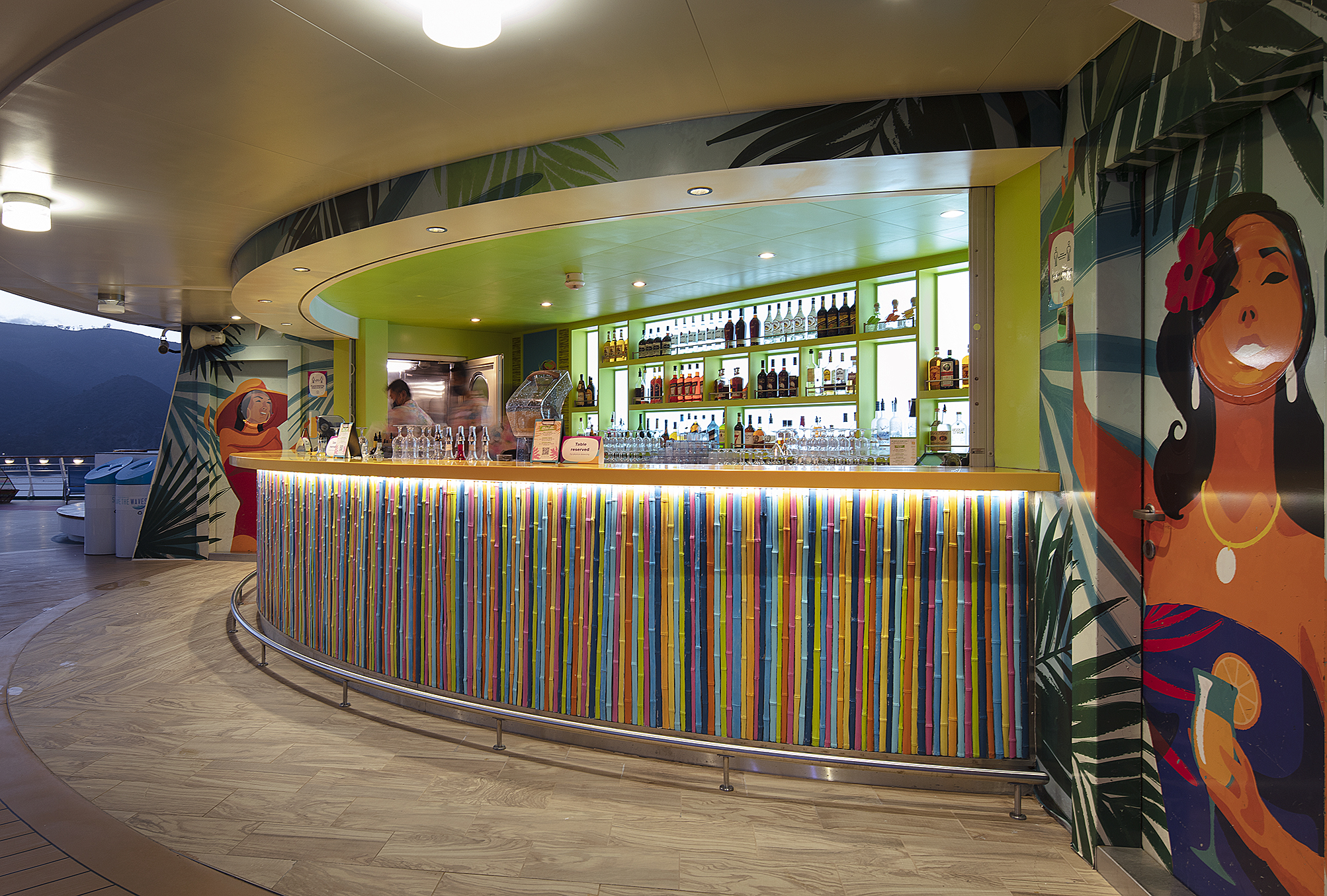
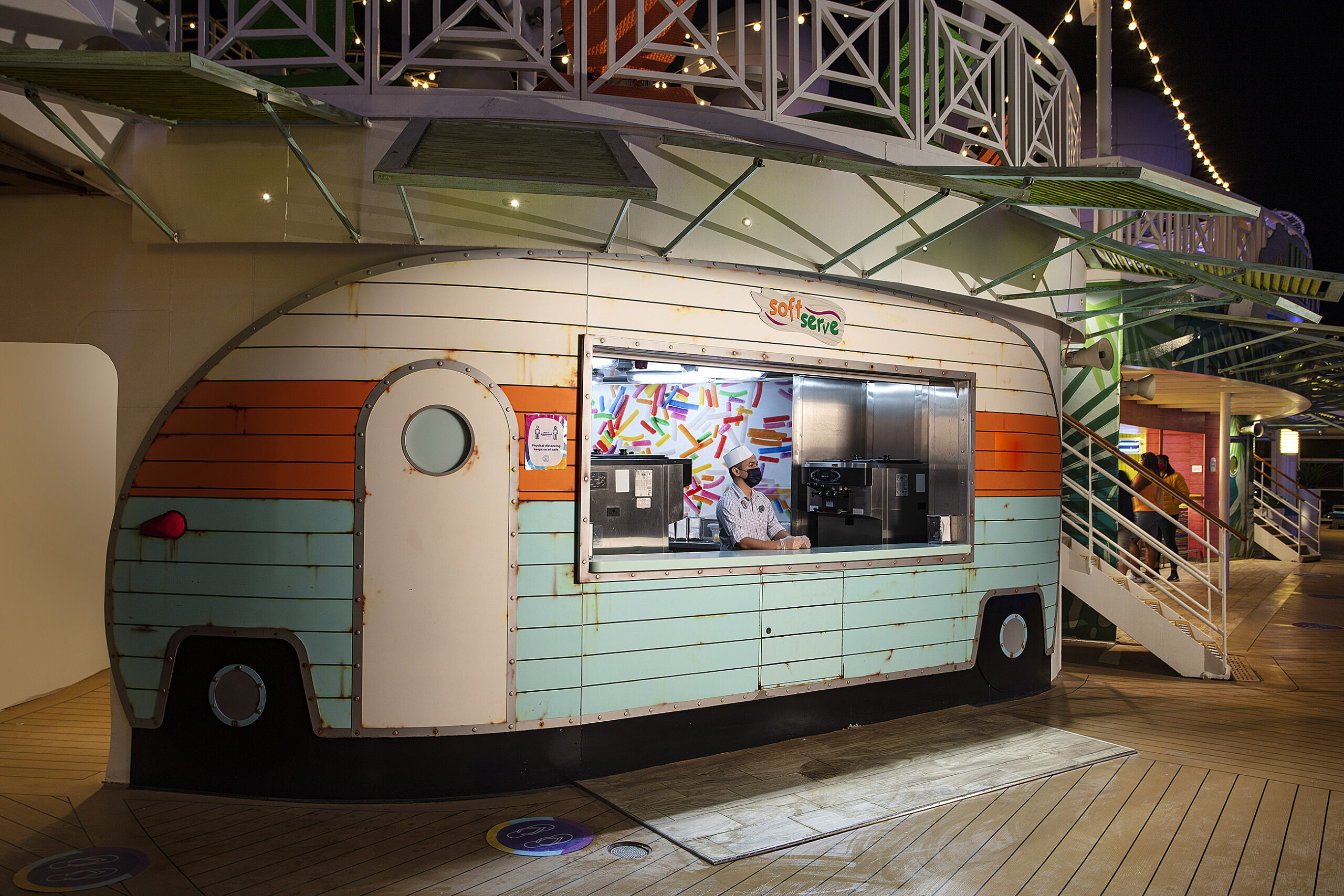

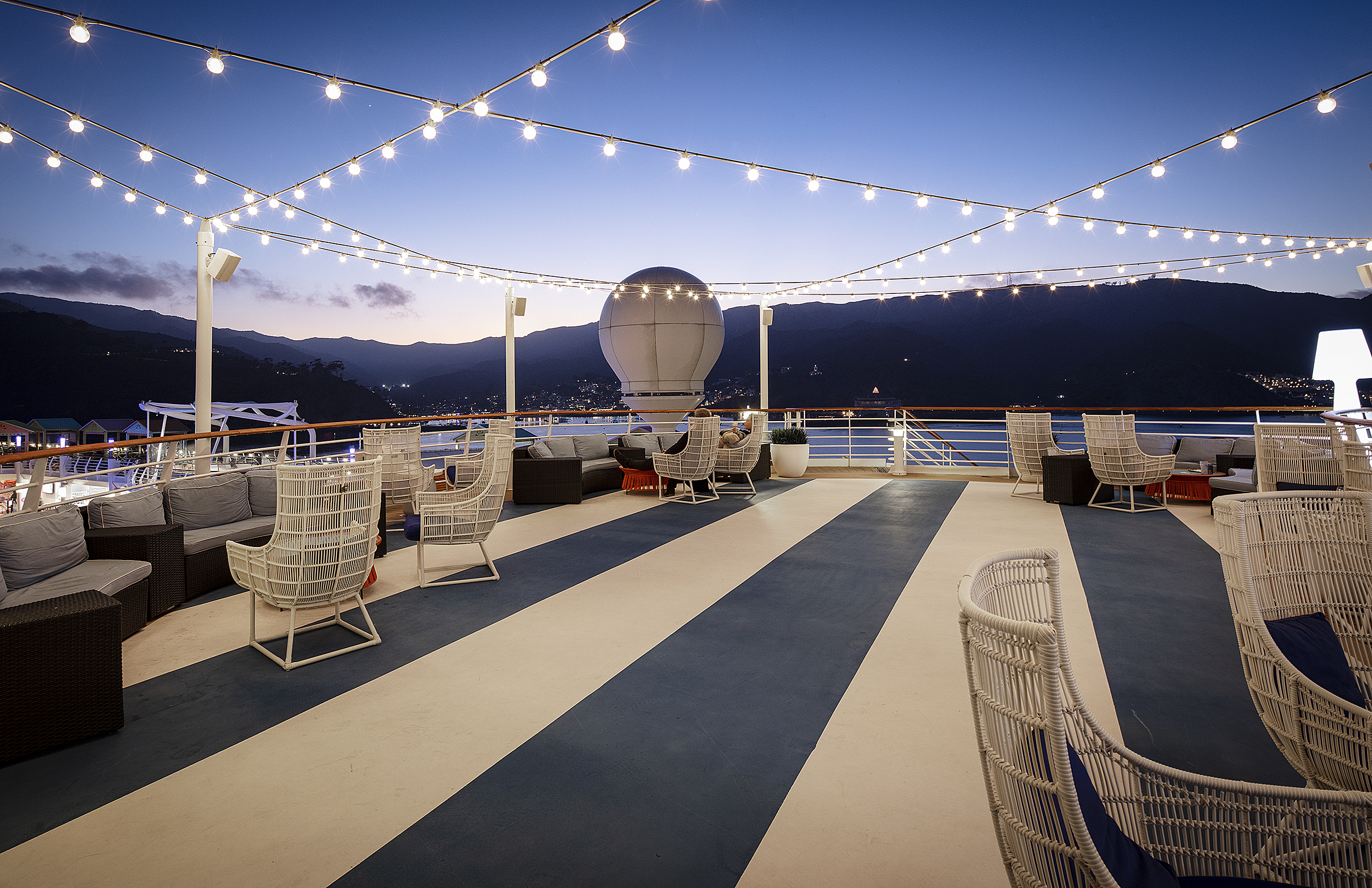
We captured deck shots throughout the day as light changed then a few nice evening shots as the sun set.
Our next stop in Ensenada Mexico was more complicated with bad weather moving in, along with questionable aesthetics of the surrounding city. Yet you work with what you have. A few of the deck shots either have cloudy skies or wet decks which worked to our advantage in some ways. The Coconut and Lime bar we ended up shooting twice as with our first attempt we ran out of daylight, so gave it another go in Mexico but with the heavy rain, it was less than ideal.
In total, we delivered around 50 final images with video footage slated for current and future projects. Overall, drawing upon years of cruise ship experience we were able to curate a set of shots that will give Robert Soldo Design years of good use.

